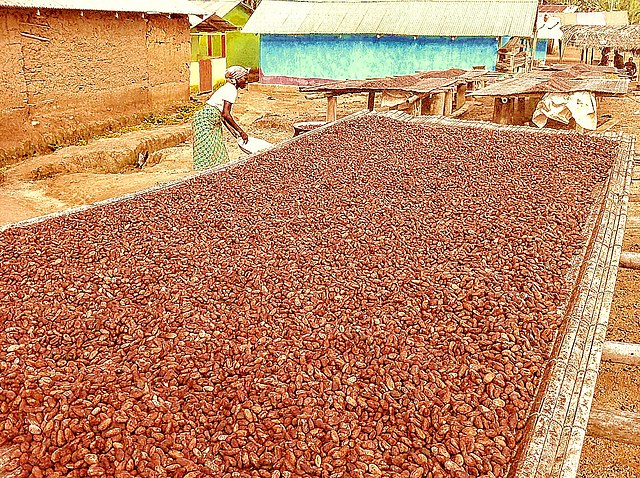Ghana’s cocoa supplies for the 2024-25 season could rebound and pressure international futures prices that hit $10,782 on June 18, 2024.
On June 18, Ghana Cocoa Board (Cocobod) forecast a production rebound to 700,000 tonnes from October 2024, onward.
The board cited good weather conditions for the upward supplies, which will redeem poor averages of 500,000 tonnes in recent years.
In actual terms, the 2023-24 Ghanaian crop bottomed out from disease and dry weather effects to 435,000 tonnes, a 22-year slump.
Ironically, in mid-May 2024 there was a weather respite that temporarily cut prices by 19% after rainfall predictions for Ghana.
But most of the year has seen dry weather. As a consequence, Ghana lost the yearly average revenue from cocoa in quarter 1, 2024 by 32.8% to $592.2 million. Comparatively, the respective 2021, 2022 and 2023 first quarters had had corresponding cocoa income averages of $825.8 million.
Meanwhile, the world market is yet to register the upcoming volume rebound from Ghana. July cocoa deliveries in both New York and London spiked on June 18, 2024 by 2.89% and 0.77% respectively.
The rise follows Ivory Coast’s announcement of a 29% yearly exports’ drop between October 1, 2023 and June 16, 2024.
Ivory Coast and Ghana are the top cocoa-producing nations and supply changes there usually occasion sharp global price swings.
For Ghana, the price rise stems from a currency value depreciation of the Cedi against the dollar by 14%. The country recorded a sharp revenue drop from low supplies and currency value slide, despite cocoa hitting $11,000 a tonne.
So, as Ghana’s cocoa production rebounds, international prices have edged yet again past the $10 k per ton mark. But this could change if the following statistics on how the country’s production influences the global market figure in.
Ghana’s Cocoa Statistics
Ghana has remained the second biggest cocoa-producing nation and together with Ivory Coast, supplies 60% of world cocoa. The 2020-21 season’s production reached an impressive 1.047 million tonnes. Since then, production has slipped consecutively due to disease and drought but the country has still retained the second position. The 2021-22 production reduced by 50% year-on-year to 683,000 while the 2022-23 crop slid to 654,000 tonnes. This is even as the 2023-24 crop dropped to 580,000 tonnes.
How has falling cocoa production in Ghana affected the international price historically?
The consecutive yearly production decreases in Ghana and Ivory Coast since 2021 have occasioned volatility in the international price. The price stood at $2,370 in 2020, $2,430 in 2021, $2,390 in 2022, $3,280 in 2023 and over $7,000 per tonne in 2024.
How has Ghana’s cocoa price performed in the 2023-24 season?
The farm-gate price rose from 20,943 Cedi ($1,382 at 2024 exchange rates) in September 2023 to 33,120 Cedi ($2,186) per tonne in April 2024. The average for the 2022-23 season had been 12,800 Cedi ($842.24 at the 2024 exchange rate) a tonne. These prices indicate the amount the government fixes for farmers to sell raw cocoa beans each season.
